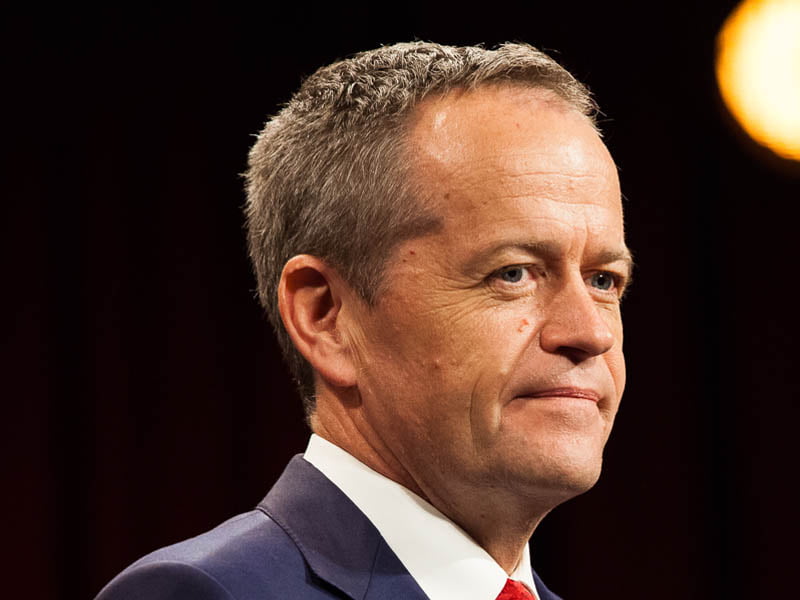Government services minister Bill Shorten will push the Treasurer for investment in a “distributed, services orientated architecture” after a study tour to leading digital nations in Europe last year.
In an address to the Meet the Chiefs lunch in Canberra, Mr Shorten also vowed to “get cracking” on digital identity after more than $600 million investment by the previous government, with legislation expected to be introduced in the Spring sitting of Parliament.
It follows agreement between federal, state and territory governments to include credentials, such as drivers licences and occupational licences, as part of the digital identity scheme at last week’s Digital and Data Ministers meeting.

Mr Shorten, who travelled to Estonia, Belgium and Denmark in November, said he had been impressed by the “service-orientated type architectures” first adopted by Estonia and now common across much of Europe during his recent trip.
“Estonia’s has been an exemplar in this area for more than 20 years. The government’s approach is simple – it’s a distributed architecture and is based on open-source software. And it works,” he said on Monday.
“These service-orientated type architectures are tried and true. Twenty countries are now using the code-base Estonia uses. I found the security outcomes of the distributed data layer very convincing.”
Mr Shorten said the “distributed, services-oriented architecture” was particularly powerful for sensitive data, with Estonia using seven databases for Health data to reduce the chance of compromise.
“For hackers to get a citizen’s full health data, they need to infiltrate seven environments in real-time. At any time, a citizen can enquire who has used it.”
But Mr Shorten also acknowledged that building a distributed architecture that puts Australia in the same league as Estonia will require long-term investment, including in its citizen-facing myGov portal.
“A crucial message I want to give to you today is that this government knows that confidence in investment is the key for significant infrastructure development,” he said.
“And let’s face it, there have been previous events that have eroded confidence in whole-of-government capabilities.”
Mr Shorten used the example of the Turnbull-era notifications platform, called Notify, which was quietly retired when the Digital Transformation Agency lost its delivery responsibilities in 2021.
“The myGov audit noted this left the 130 federal, state and local government agencies that adopted the platform in a scramble to find a new provider at short notice,” he said.
“That would make ICT architects understandably wary of adopting capabilities that do not have certainty of funding.”
An audit of myGov last month urged the government to commit long-term ongoing funding to myGov, which the expert panel said was a new form of “critical national infrastructure”.
The audit also flagged the possibility of myGov moving to an open source system once digital experience platforms are onboarded onto the government’s CMS. The platform is currently underpinned Adobe Experience Manager, having undergone a recent overhaul.
Despite his support for long-term investment, Mr Shorten hasn’t ruled out further outsourcing of digital capabilities, expressing a desire to work with private providers and then buy them back.
“I spoke to government leaders and officials, and a number expressed the view that Estonia’s history of public-private partnership has been integral to its success,” he said.
“I like the Estonian approach that if a private company can deliver something cheaper than the government, the government outsources this to the private sector, and then buys it back.”
Mr Shorten also said the government has started work to fix the “antiquated Passports process”, with plans to allow citizens to renew Passports using myGov.
“We’ve started work on Passports and, as the task progresses, we’ll create a whole of government solution for executing deeds and statutory declarations. There are currently 146 government processes involving stat decs.”
“Allowing people to use myGov to execute these legal documents will conservatively save around $80 million per annum in time savings for citizens. No more chasing JPs.”
The Albanese government has already flagged significant, long term government investment will be needed to reach its target spot atop global digital government rankings.
Do you know more? Contact James Riley via Email.


Is it possible that Australia could stop copy-cat digital? Is it possible that the people who congratulate themselves for “innovation” could actually innovate? Their game is called Imitate to Innovate. Australia copies other countries – the DTA is great at that. But is it possible for Bill to stop calling APS waste an “investment”? Could he stop calling the tax base by the innocuous name “funding”? Could there be a stop to the endless waste of money in failed copies of other country’s ideas? Australia innovated in the past and could do so again. Thanks Bill, who is a lawyer and isn’t likely to know what a “distributed, services-oriented architecture” actually is. Lawyers don’t do architecture. But then architects don’t generally do the law either. True? (ps. JPs don’t charge. Who made up the 80 million buck savings? Citizens’ time isn’t money. They don’t have an hourly rate.).